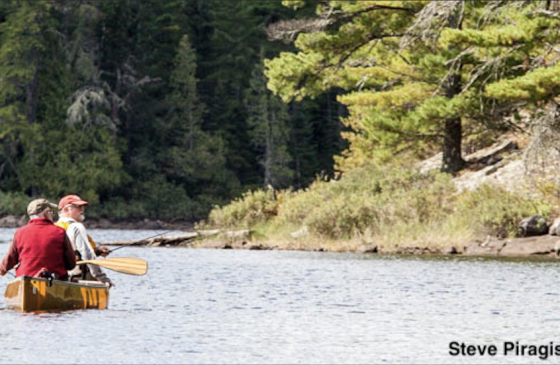The Boundary Waters is known for its world-renowned backcountry angling of northern pike, walleye, lake trout, and smallmouth bass.
Paddling season in the Boundary Waters officially began on May 1 with the required use of BWCA entry permits, even as Northern Minnesota’s winter lingered longer than usual. And for many Wilderness enthusiasts, May 14, 2022, marks the start of another longstanding summer tradition: Fishing season.
Much like the start of paddling season, this year’s fishing opener appears set to be an icy one. And even if the ice melts from a lake, water can remain dangerously cold in the Boundary Waters well into June. If you’re planning on an early season fishing trip, make sure to read our blog on cold-water safety in order to be prepared.
Despite a later start to the season, a tasty shore lunch is just a few weeks away.
What to catch, where to catch, and how to do it correctly
Some of the most important practices for fishing in the Boundary Waters are following local regulations and minimizing your impact on the natural space around you. As a Wilderness Area (which you can learn more about here!), the Boundary Waters is a uniquely wild place with very little human development. Responsibly recreating in the Wilderness means ensuring future visitors can experience the same solitude and cleanliness of the BWCA.
In order to fish anywhere in the state of Minnesota, you’ll need a current-year fishing license from the Department of Natural Resources. Additionally, make sure to read up on the DNR’s possession limits and whether certain species and sizes are required to be released when caught. It’s important to remember that these limits can depend on location, and they may differ in the BWCA from other areas of Minnesota.
While the prevalence of species varies on a lake-to-lake basis, the Boundary Waters houses many of Northern Minnesota’s usual suspects. You can expect to catch lake trout, smallmouth bass, and the walleye, Minnesota’s state fish. Northern pike are also found within the Boundary Waters, and they are both rarer and larger in the region than in Southern and Central Minnesota.
The best lakes for fishing in the Boundary Waters can be somewhat of a subjective topic. However, various outfitters and active members of BWCA forums agree that Basswood Lake and Knife Lake are excellent for anglers looking to paddle into the Wilderness interior. For those hoping to stay closer to roads, Seagull Lake on the Gunflint Trail and Kawishiwi River near Ely are solid picks.
Make sure to read up on motorized use limitations
Seasoned Boundary Waters anglers are no doubt familiar with this rule, but it’s worth noting for first-time visitors: The use of motorized watercraft in the Boundary Waters is highly regulated by the U.S. Forest Service. This is done in order to maintain the Boundary Waters as an untouched stretch of wilderness and protect the especially high water quality of its lakes.
Restrictions on motorized watercraft depend on the horsepower of a boat’s engine. There are only four bodies of water within the BWCA that do not have horsepower limitations. A vast number of the area’s lakes completely restrict motorized use, and a few lakes allow for 10- or 25-horsepower motors. A complete list of these lakes can be found on page 7 of the Forest Service’s BWCA trip planning guide.
Furthermore, all motorized watercraft use requires a reserved, quota-based permit from May 1 to Sept. 30, regardless of whether you plan to stay in the Wilderness overnight. This differs from single-day paddling permits, which are self-issued and not subject to quotas. These regulations are one of the major reasons canoe fishing is so popular in the Boundary Waters, along with the accessibility to interior lakes afforded by paddling.
The solitude of the Boundary Waters can provide an excellent backdrop for fishing, whether you’re looking for backcountry angling or a day trip onto one of the exterior lakes. But these unmatched recreation experiences are only possible through the continued practice of sustainable fishing according to local regulations. Make sure to fish responsibly when you visit the Boundary Waters, and if you’re unsure about rules, ask an outfitter when you reach your trip’s destination.
